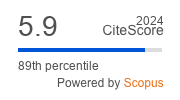Article | Open Access
Trust Signals: An Intersectional Approach to Understanding Women of Color’s News Trust
| Views: | 2309 | | | Downloads: | 1883 |
Abstract: Journalism scholars have increasingly become concerned with how our changing media environment has shifted traditional understandings of how news outlets create trust with audiences. While many scholars have focused on broad avenues of building trust with audiences through transparency, community engagement, and funding, arguably less attention has been paid to how audience members’ social positionality—determined by factors such as race, class, and socioeconomic status—can shape their varying understanding of what makes a news source trustworthy. Thus, in this study, I conducted focus groups with US women of color, a community marginalized minimally along race and gender, to understand how their positionality shapes how they conceptualize news trust. Through eight focus groups with N = 45 women of color, I found while participants used known antecedents of news trust, these were often more specifically rooted in their own experiences with racism, heterosexism, and classism. Further, participants had varying conceptualizations around antecedents of trust, such as accuracy and bias. Through these findings, I suggest how news organizations can better establish trust across marginalized communities.
Keywords: digital media; intersectionality; marginalized communities; news trust; women of color
Published:
© Chelsea Peterson-Salahuddin. This is an open access article distributed under the terms of the Creative Commons Attribution 4.0 license (http://creativecommons.org/licenses/by/4.0), which permits any use, distribution, and reproduction of the work without further permission provided the original author(s) and source are credited.


